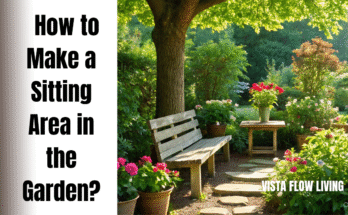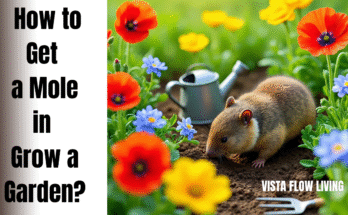Creating a flower garden is one of the most rewarding and peaceful hobbies you can take up. Whether you have a big backyard or a small corner by your front porch, growing colorful, fragrant flowers can bring life to any space. If you’re a beginner and not sure where to start, don’t worry—this blog will walk you through every step to make your very own flower garden, the easy way.
Step 1: Choose the Right Location
The first thing you need is a good spot for your flower garden.
Sunlight: Most flowers need at least 6 hours of sunlight each day. Choose a spot that gets plenty of sun.
Soil: The soil should drain well. Avoid places where water gathers after rain, as most flowers don’t like soggy soil.
Space: Even a small area can become a beautiful flower garden. You can also use pots or raised beds if you have limited space.
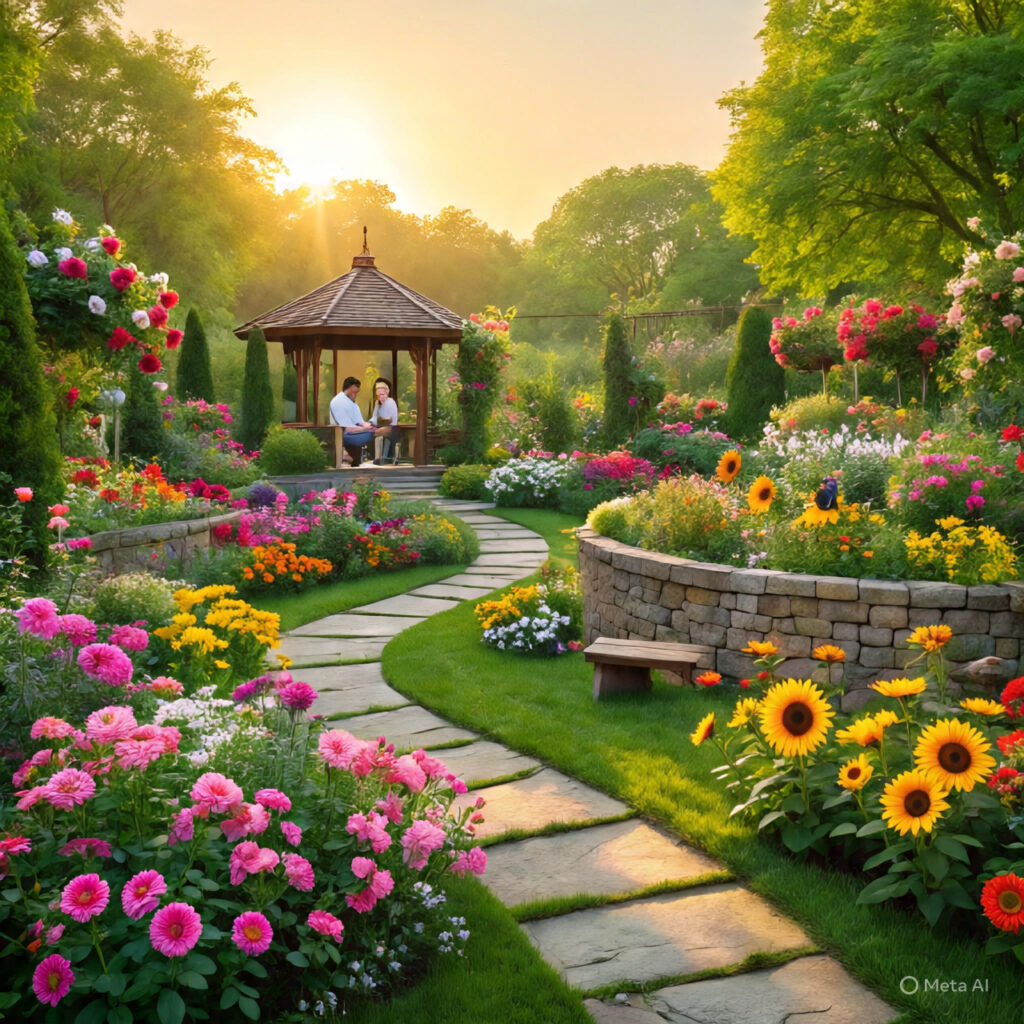
See also: Best Minecraft Garden Ideas
Step 2: Prepare Your Tools and Materials
You don’t need fancy tools to start. Here are the basics:
- Gardening gloves 🧤
- Small shovel or trowel
- Rake (optional)
- Watering can or hose
- Compost or organic fertilizer
- Seeds or flower plants
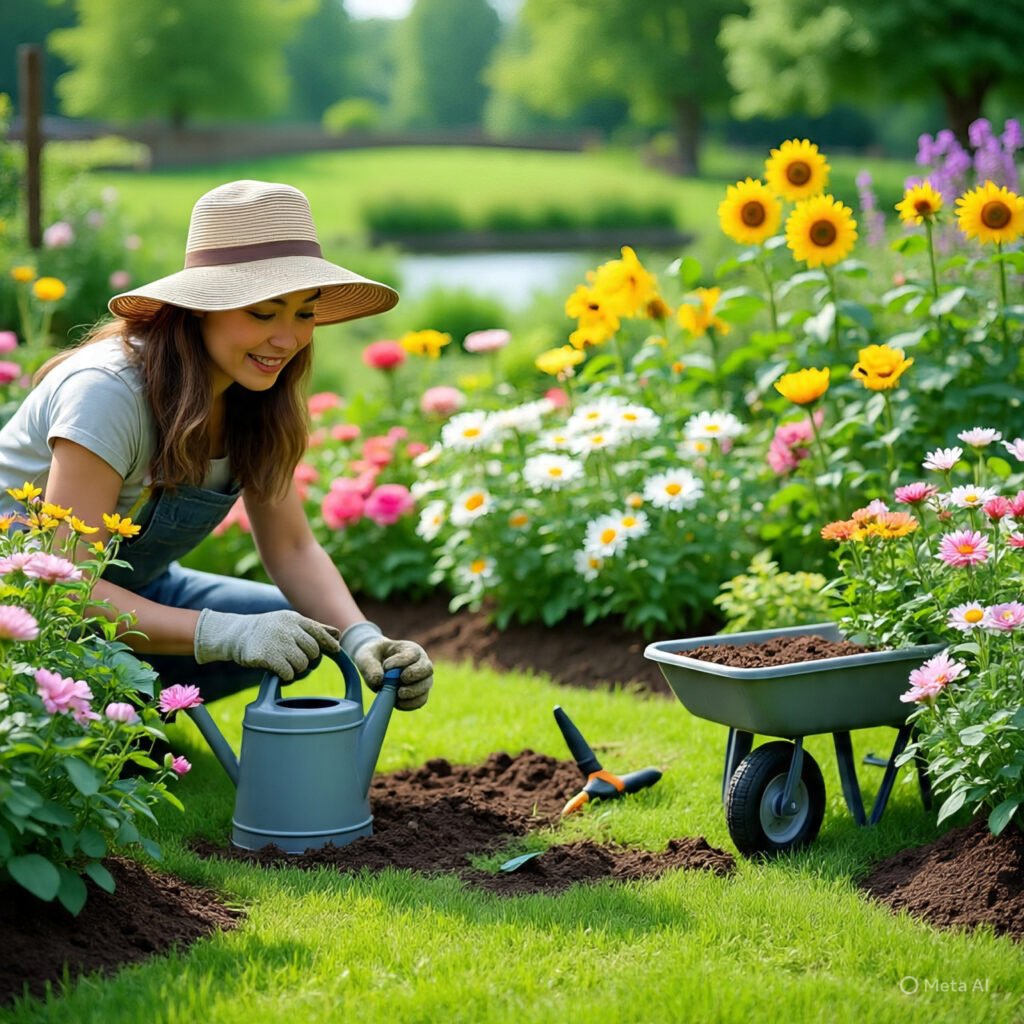
Step 3: Clear and Prepare the Soil
Now it’s time to get your hands a little dirty!
- Remove grass or weeds from the selected area.
- Loosen the soil with a shovel or rake. Dig at least 6–8 inches deep.
- Mix compost or organic fertilizer into the soil to make it rich and healthy.
Tip: Good soil = healthy flowers!
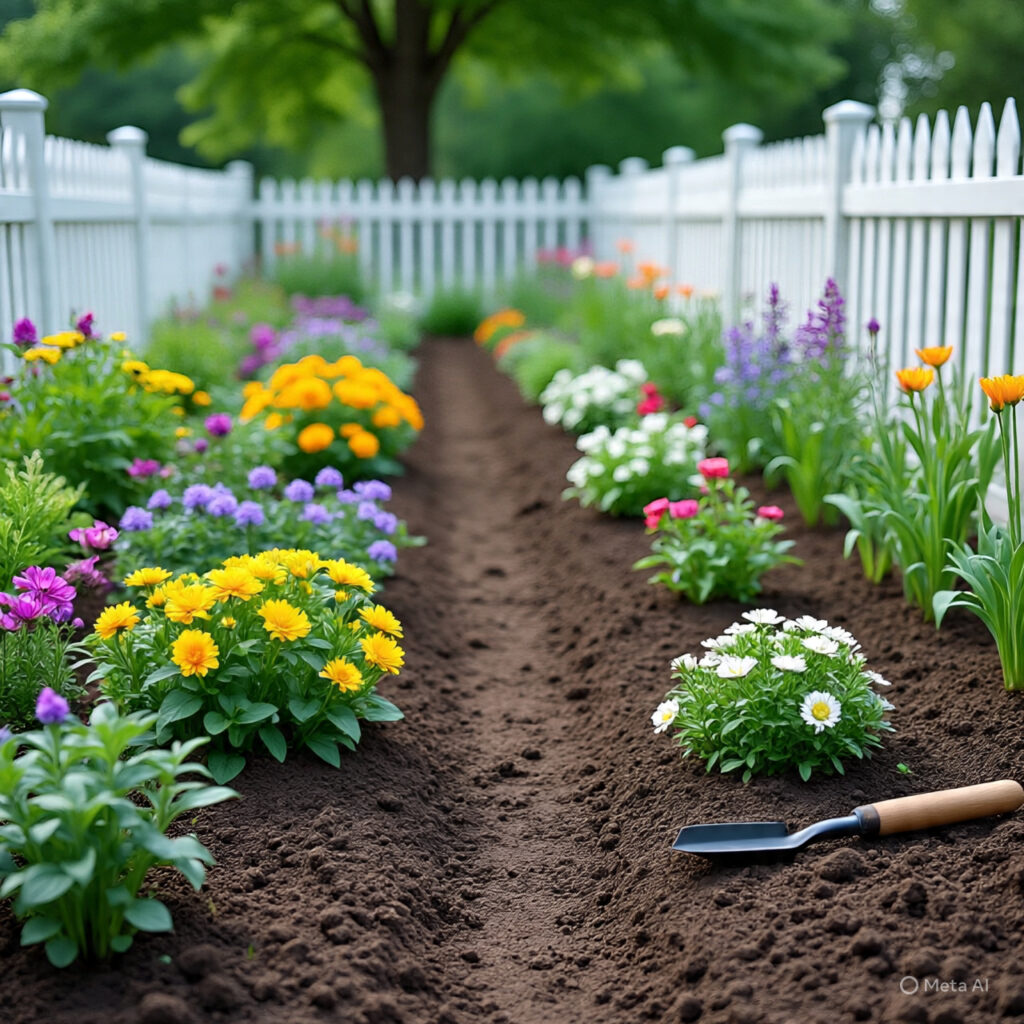
See also: 25 Creative Home Garden Ideas to Transform Your Outdoor Space
Step 4: Choose Your Flowers
This is the fun part! Think about:
Sun vs. Shade
- For sunny spots: Try marigolds, zinnias, petunias, or sunflowers.
- For shaded areas: Go for impatiens, begonias, or hostas.
Color and Style
Mix and match colors. For a beautiful effect, plant taller flowers in the back and shorter ones in the front.
Annuals vs. Perennials
- Annuals bloom for one season (e.g., marigolds, petunias).
- Perennials return every year (e.g., daisies, tulips, lavender).
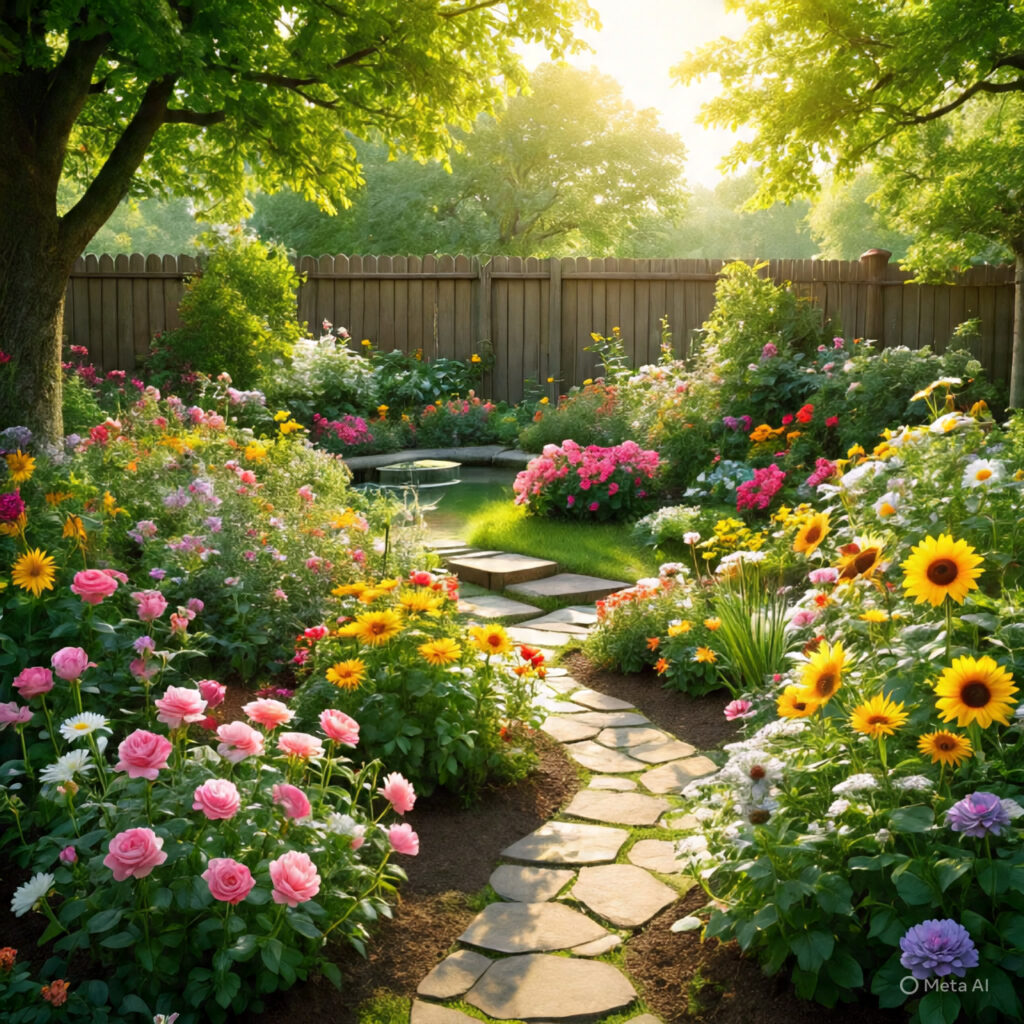
Step 5: Plant Your Flowers
You can use seeds or young plants from a nursery.
- Seeds: Follow instructions on the seed packet for depth and spacing.
- Plants: Dig a hole twice the size of the plant’s root ball, place it in, and gently cover with soil.
Water them right after planting to help the roots settle.
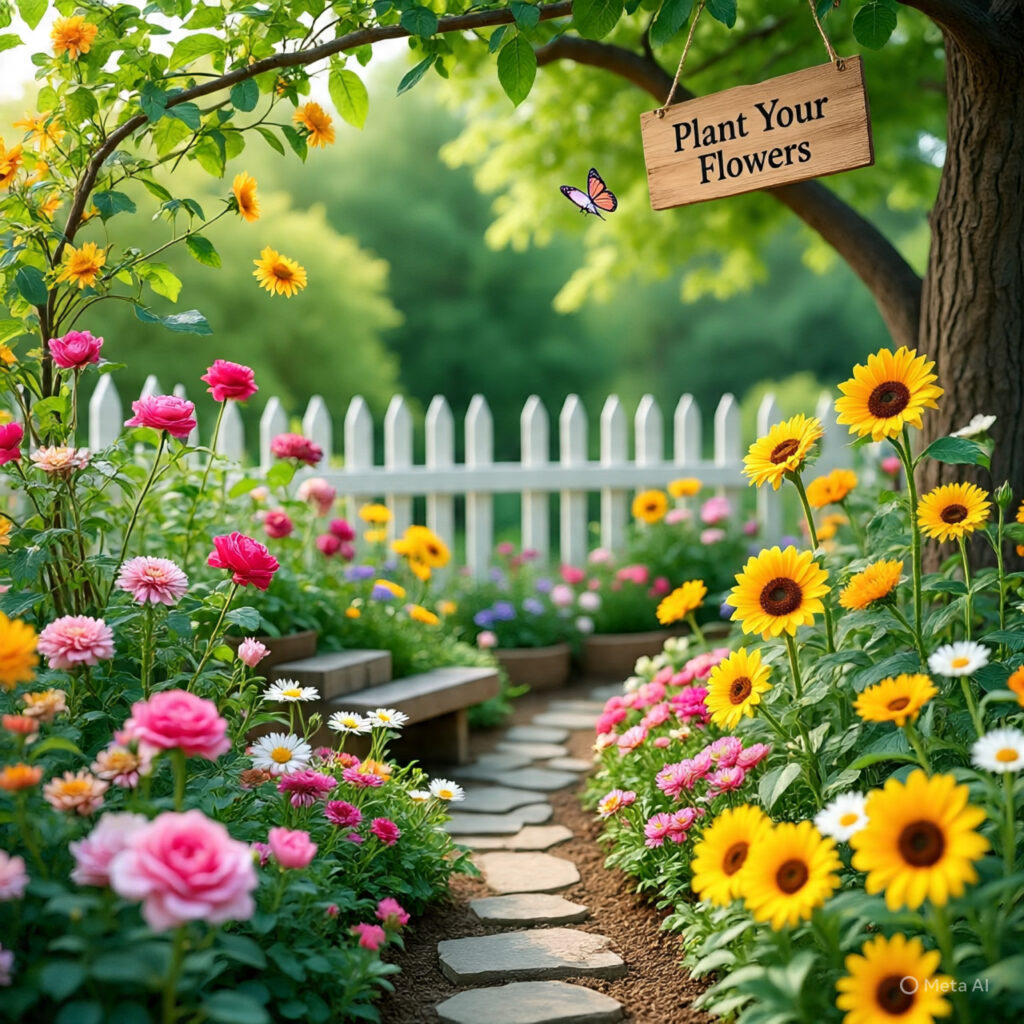
Step 6: Water and Care
Water your garden regularly—especially in the beginning.
- Morning watering is best.
- Don’t let the soil dry out completely.
- Remove weeds that grow nearby so they don’t take nutrients away from your flowers.
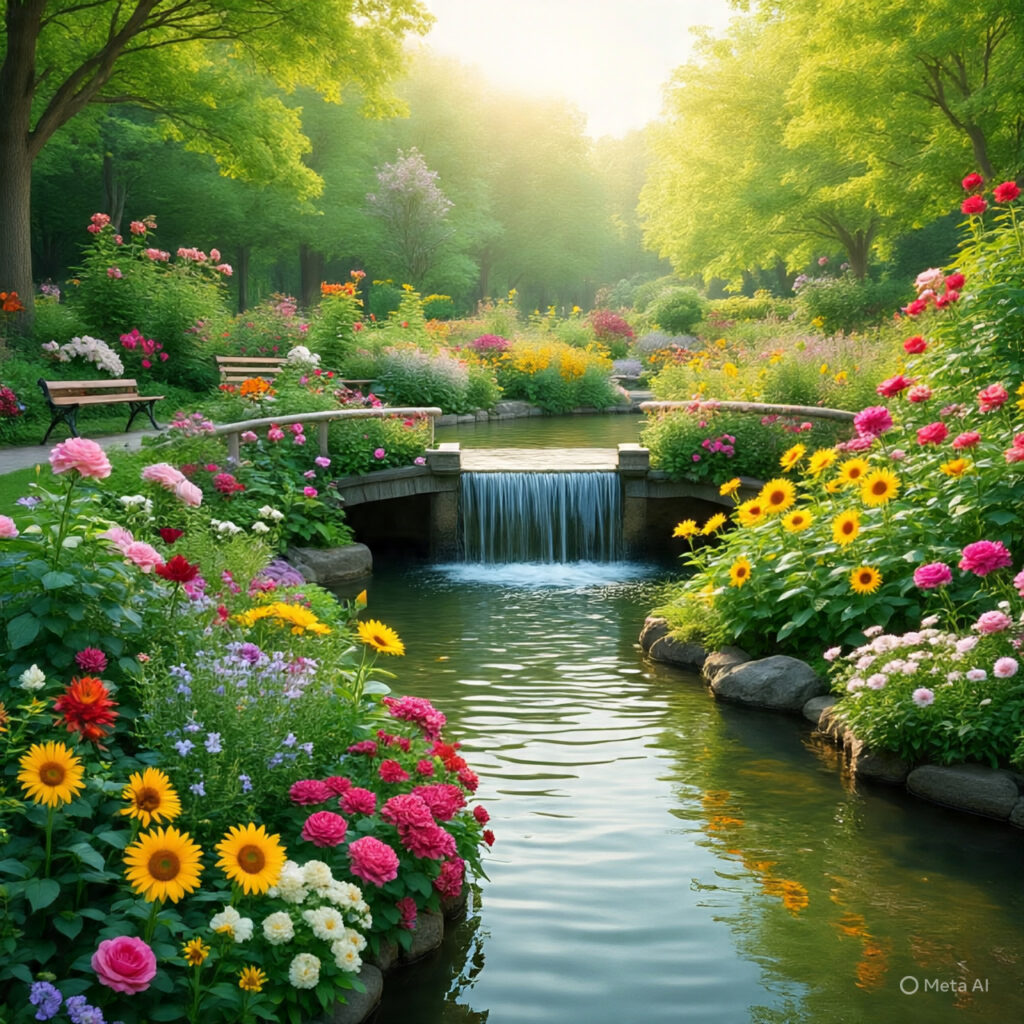
Step 7: Maintain and Enjoy
- Deadhead (remove) faded flowers to encourage new blooms.
- Add mulch around the plants to keep the soil moist and reduce weeds.
- Keep an eye out for pests or plant diseases.
Within a few weeks, you’ll see your garden bloom and become a colorful, peaceful place to enjoy every day.
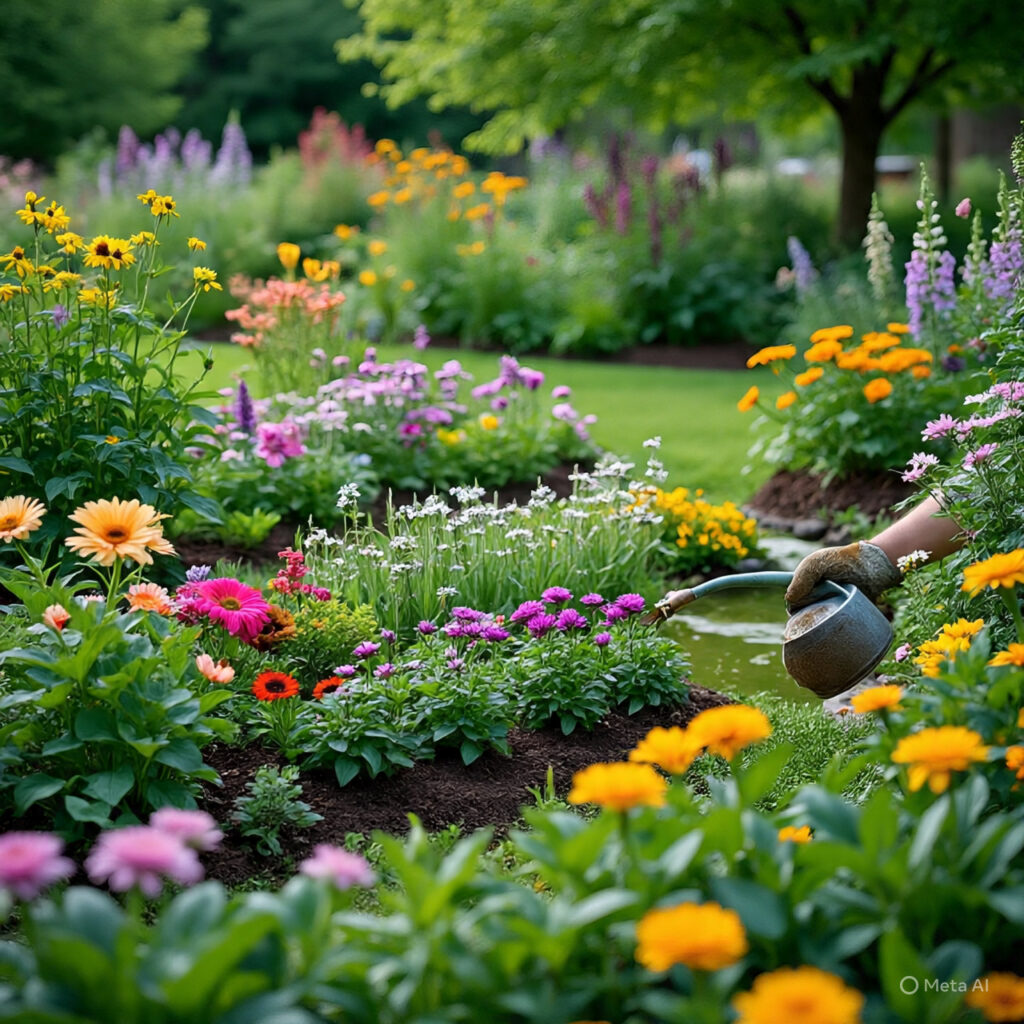
Summary
Making a flower garden isn’t hard—it just takes a little planning, love, and care. Whether you want a garden full of roses, wildflowers, or cheerful sunflowers, the joy of watching your flowers grow is priceless.
So grab your gloves, pick your favorite flowers, and start digging. A beautiful flower garden is just a few steps away!
FAQs about a Flower Garden
What is a flower garden?
A flower garden is a dedicated space for growing flowering plants, often arranged for beauty and fragrance.
Which flowers are best for beginners?
Marigolds, zinnias, and petunias are easy to grow, low-maintenance, and great for new gardeners.
How much sunlight do flowers need?
Most flowers need 6–8 hours of sunlight daily, but some shade-loving types need less.
How often should I water my flower garden?
Water 2–3 times a week, depending on weather; keep soil moist but not soggy
When is the best time to plant flowers?
Spring is ideal for most flowers, though some varieties can also be planted in early fall.


